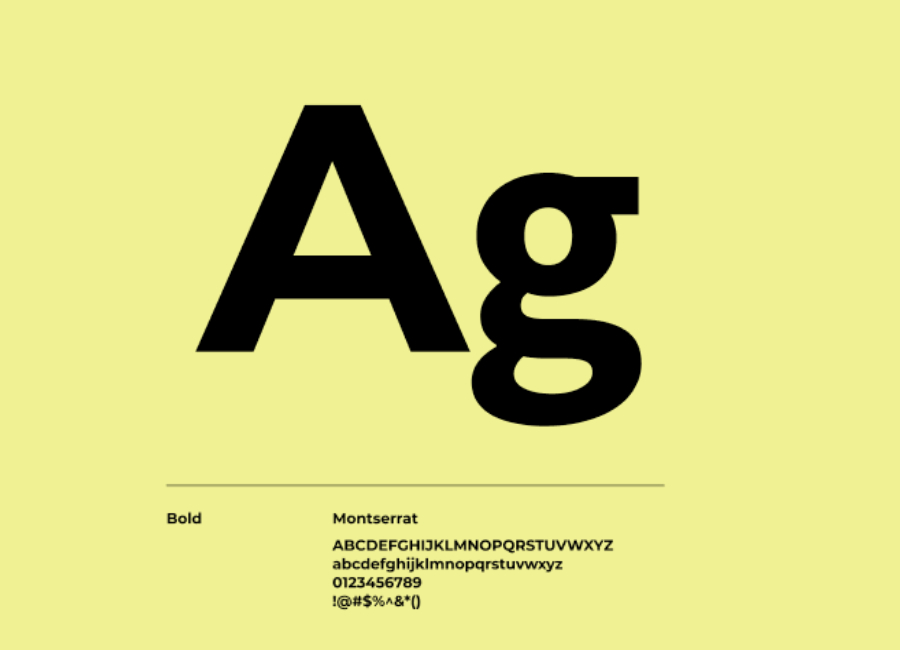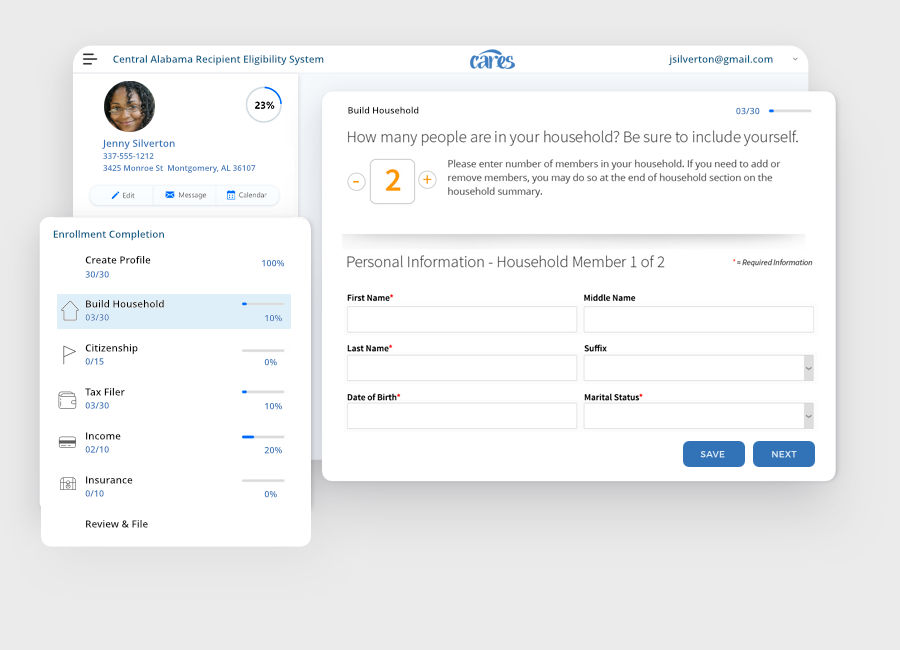CARES OF ALABAMA
Our team was assembled with the task of modernizing the enrollment and eligibility program for Medicaid, Child Health Insurance as well as Food Assistance and Subsidized childcare. The project was called CARES, or the Central Alabama Recipient Eligibility System and through this new system, citizens are linked with critical, life-saving services.
The following static images are actual designs and prototypes. The Citizen and Worker Portals are only accessible as a Medicaid recipient or case worker.
OVERVIEW
REFACTORING MEDICAID
The Alabama CMS and Department of Human Resources established the primary goal of improving the design and usability for the client facing Medicaid eligibility system, or the Citizen Portal. The final deliverable would provide end to end eligibility enrollment for individuals and families with multiple pathways for support. It should be ADA compliant, vendor neutral and system agnostic.
MY ROLE
I joined CARES as the single UX/UI Designer on a team of a hundred contractors and my role impacted every aspect of the client facing deliverable. Our project style was Agile and I rotated through all teams attending morning standups while collaborating with dev teams, SME’s and stakeholders.

THE APPROACH
FOCUSING ON THE CITIZEN
The discovery phase was an intense, all hands on deck effort that allowed us to define project milestones, audit existing work and understand our client's vision while beginning the research into user needs and behaviors.
Although the team followed an Agile Scrum process, I incorporated my own lean workflow style which included rapid sketching, prototyping and design mockups. This enabled me to work quicker, making changes on the fly while meeting sprint deadlines.
THE PERSONAS
WHO'S USING THIS?
The initial research provided sufficient behavioral data to segment the user audience for the Citizen Portal. I created proto personas, a non-research-backed articulation of a customer archetype. This enabled me to shift focus from the anticipated final-product to the end-user, breaking everything down into activities ranging from frequency of use, availabile resources and comprehension of the technology.
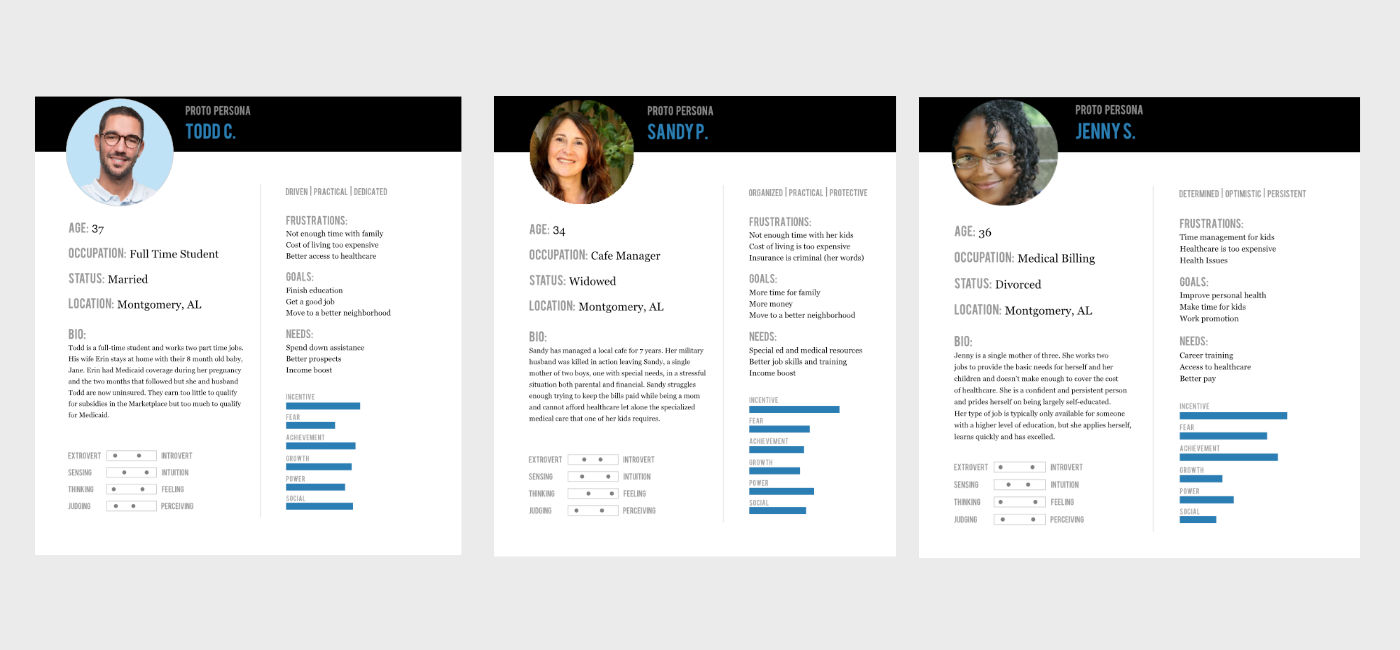
DEFINING PROBLEMS
UNDERSTANDING THE FLOW
The ubiquitous nature of Medicaid as a service meant I was surrounded by people who had used it themselves or knew someone who did. Next, the team conducted a range of interviews with coworkers, stakeholders and SMEs (Subject Matter Experts) to understand the scenarios and motivations for its use.
Knowing who I was designing for allowed me to ask questions about how the process of enrolling for Medicaid eligibility worked in the everyday lives of citizens. My initial focus was on what I'd learned about the challenges users faced rather than getting mired down by specifics about interfaces, technologies or business goals.
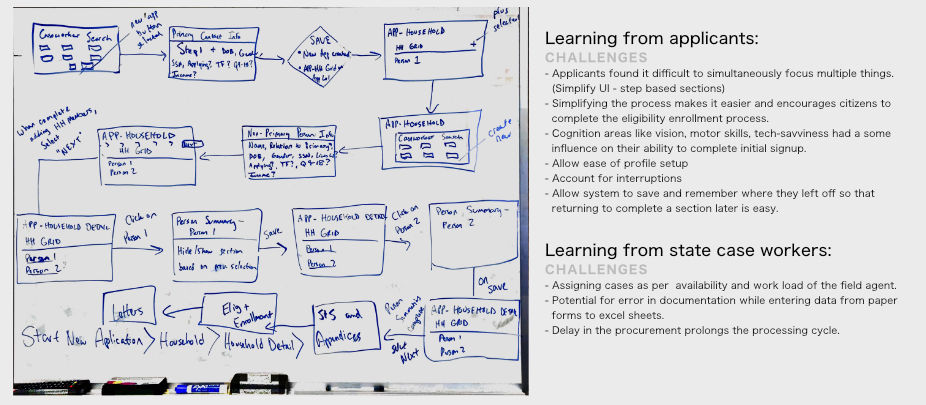
A USAGE CONTEXT
THE CITIZEN EXPERIENCE
Understanding the personality of the Citizen Portal helped me to develop a clear vision of the brand tone. To communicate this personality the client and team, I developed a set of experience principles used to sense‐check design decisions, articulate core values and describe key attributes the app experience should uphold for citizens using the app while meeting expectations of the stakeholders.
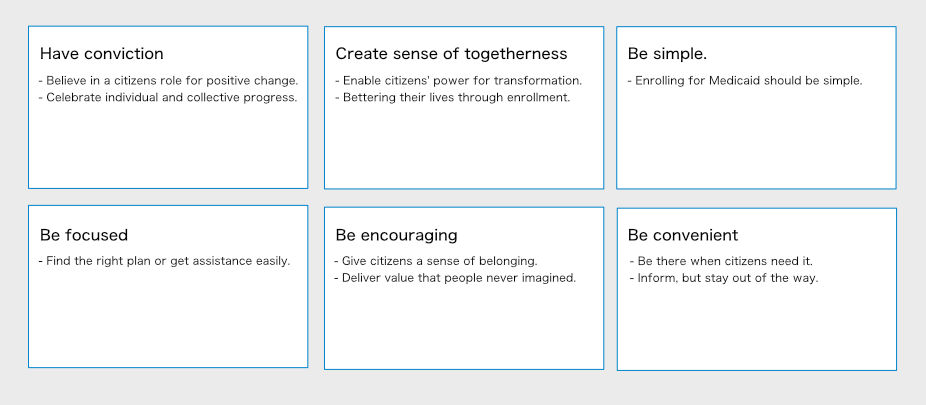
LOOK & FEEL
A DESIGN DIRECTION EMERGES
I began by creating storyboards and thumbnail sketches while giving much consideration to the impact of design on cognitive load; so icons, flows, color and typography were carefully selected. I favor Montserrat for its range of weights within a single font family, its legibility on various viewports and that it's available from Google's CDN.

The Citizen Portal flow
THE FRAMEWORK & COMPLIANCE
GIVING IT STRUCTURE
I used Jesse James Garret's Visual Vocabulary to help the dev teams visualize the overall site architecture. The Citizen Portal utilized the Bootstrap front end framework as well as knockout.js and several other frameworks. The site needed to be 508 compliant as per the ADA guidelines, so I referenced the Government wide 508 accessibility program as well as WCAG standards.
